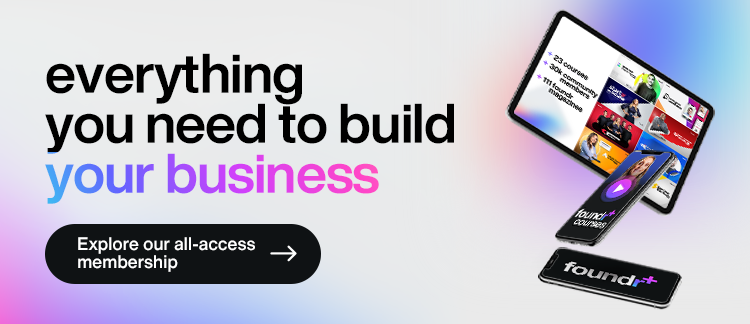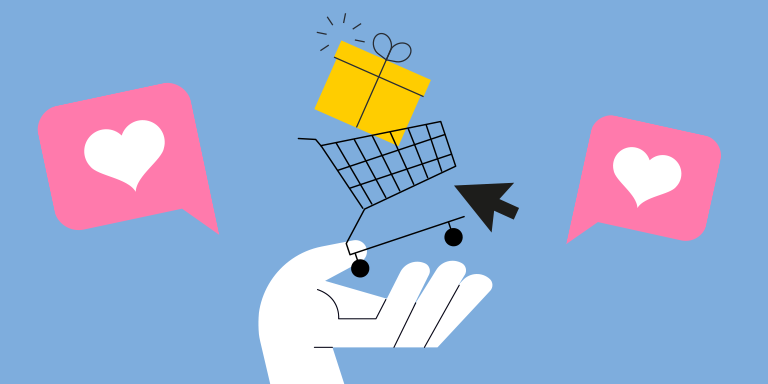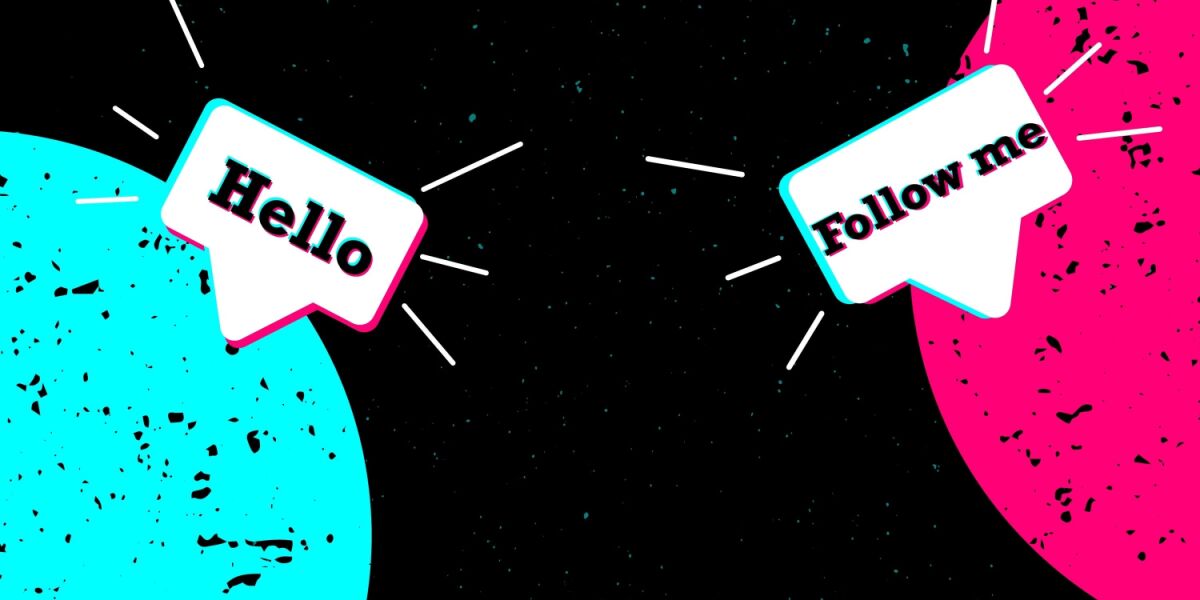This summer, the launch of Threads, a new text-based social media platform, set off another gold rush for creators, marketers, and early adopters lusting for another channel to force hockey-stick growth.
Threads, created by Instagram (well, technically, Meta, the social platform turned conglomerate formally known as Facebook), is essentially a cloned early version of Twitter (or X if we’re calling that now). The twist is
Threads allows users to transition their profile info and followings from Instagram, whereas competitors like Mastodon make you feel like you need a personal IT department to get signed up.
As a business owner or entrepreneur, you’re probably asking the same question that social media managers worldwide are–another platform, really?
More platforms come with more opportunities, but it feels like more work to stay on top of things. So before you start dumping old Twitter rants into Threads–praying one will make your brand an overnight success–stop and think about why?
Why do you need to be on another platform when you already have access to the cheapest and highest-converting tool on the market?
It’s word-of-mouth marketing—the fundamental way to get your business, brand, or product out into the world.
But for its simple nature, word-of-mouth marketing is tricky to generate. You can’t force someone to talk about your product or service. You can’t force dinner conversations where someone reveals your business is fantastic. And you can’t forecast an ROI for word-of-mouth marketing.
Word-of-mouth marketing isn’t in your full control, which makes it intimidating.
That’s why we’ve talked to the world’s most successful founders that have witnessed the power of word-of-mouth marketing. Fortunately, they’ve shared how to up a business to influence the whimsy of word of mouth.
And unlike opening up another account on another platform, word-of-mouth marketing is baked into what you’re already doing. Here’s why.
What Is Word of Mouth Marketing?
Word of mouth is a phrase to describe people sharing something with someone else unprompted or without incentive.
Think about the last time you went to dinner with friends. What did you talk about?
Maybe a movie you saw last week or the latest artist you can’t stop streaming. If somebody in the conversation said, “Hey, you’ve got to try [x].” That’s word of mouth. The person didn’t recommend a movie because they were paid by the studio. They shared it because they loved it.
Word-of-mouth marketing encourages those moments by creating a product, customer experience, or message that resonates with an audience enough for them to express their reaction to others.
Word of mouth is all about eliciting an emotional response. Because emotions spread, not perfectly crafted sales pages, email campaigns, or SMS messages.
Unfortunately, word-of-mouth marketing tends to get looped into other marketing tactics like influencer, affiliate, or gorilla marketing (remember that fad), but it’s different. Let us explain.
Word of mouth marketing…
…isn’t something you can buy.
…can’t be strategized by a consultant.
…can’t be forecasted.
…is difficult to measure.
…is beholden to timing.
…is the most cost-effective marketing strategy.
So, if word of mouth is as elusive as a celebrity reposting your Thread, how do we know it works? Because founders in every sector and level of business have seen it work.
Don’t Skip: Ultimate Content Marketing Strategy
Why Word of Mouth Marketing Works
Thirteen years ago, cloud-security giant Cloudflare launched at a technology startup pitch competition.
But when co-founder Michelle Zatlyn stood on stage at the event, she was embarrassed by Cloudflare. She didn’t think the product was ready for launch. But funding was drying up, and the founders’ hands were forced.
“We were fighting a lot internally,” Zatlyn says. “There [were] about six of us at the time [debating] about whether it was ready or not. I said, ‘Just ship it.’”
Cloudflare won the 2010 competition and, more importantly, captured its ideal users. Zatlyn says,
“Our audience [was] all technical folks in the audience. All those people had blogs or small businesses, [and] a bunch of them signed up,”
She mimes a line graph. “Literally, our numbers have been up to the right ever since the day we launched. They’ve never stopped growing.”
Because Cloudflare offered a freemium security solution to individuals and small businesses, they created a network of advocates that helped them improve the product. Their early customers also became spokespeople for Cloudflare at their full-time jobs working at corporations, eventually allowing securing enterprise customers for Cloudflare.
Zatlyn’s story is an example of word of mouth igniting in a conference room. But word-of-mouth interactions that lead to a transaction happen on a one-to-one level.
Jay Baer, marketer and author of Talk Triggers: The Complete Guide to Creating Customers With Word of Mouth, believes that businesses can influence the word-of-mouth domino effect.
We spoke to him in issue 73 of the Foundr Magazine. Baer says,
“We went to sleep on word of mouth because of the rise in social.”
Baer conducted four research projects when writing Talk Triggers. He found that, depending on the type of company, between 50 and 91 percent of all sales were influenced by word-of-mouth marketing.
Tamara Mellon, the founder of Jimmy Choo, agrees with Baer that word of mouth is persuasive in getting customers to your sales pages.
“When you finally get something that suddenly goes viral through word of mouth, that’s what you really want.”
So, if founders agree that word of mouth is what everyone wants, how do you generate it?
How Do You Influence Word of Mouth Marketing?
If you want your customers to talk about business like your aunts talk about your career, then you’ll need to do more than cross your fingers and hope.
Thankfully, we interviewed founders that influenced word-of-mouth marketing that you can replicate for your business.
Risk Being Different
Kendra Scott started her self-titled billion-dollar jewelry business out of failure. During the 2008 recession, she shifted her business from B2B to retail. Now, Kendra Scott Jewelry is a billion-dollar business with 100 retail locations across the US.
Scott risked everything on her vision for the ideal jewelry shopping environment. Instead of stuffy salespeople behind the counter, Kendra Scott employees interacted with customers like old friends and customized the shopping experience. Oh, and also free Champagne pours.
“It was unlike any jewelry shopping experience that had ever existed.”
Scott says. “It was like a nightclub.”
Lines started forming around the block as more and more customers pledged to the Kendra Scott experience. There was an undeniable fever of excitement around the brand.
“I would hear this roar of people, and laughter, and community, and I thought, ‘This is working,'” Scott says.
Being different is scary. But people don’t talk about the brands that play it safe.
Build a Better Product
Christina Stembel, founder of Farmgirl Flowers, built the multi-million dollar flower business she started in 2010 on less than $50,000. She survived the early years not with an aggressive ad spend but because her flower business offered a better experience than local mom-and-pop flower shops or box stores.
“Honestly, I mean marketing people would not agree with me at all on this, but I will stand behind it,” she says in issue 95 of the Foundr Magazine. “It was having a better product. It was really being focused on our product and our customer experience, because word of mouth, I cannot stress enough how important it is.”
People notice a product that solves a problem. But they remember the product that did it better.
Create a Moment of Attention
Jim McKelvey was a glassblower when he created the idea for the payment platform Square (now Block, Inc.). In the 15 years since McKelvey started the business, Square has grown into a billion-dollar company and beat the world’s best company at absorbing startups—Amazon.
During a foundr+ live event, McKelvey shared that one of the first challenges they faced at Square was designing a credit card reader attachment connected to a phone via a headphone jack. The prototype was too narrow for a card to swipe smoothly, yet McKelvey released the short readers.
“Why did I purposely compromise my industrial design and get a product that worked 80% of the time when I could have a product that worked a hundred percent of the time?” McKelvey says.
Instead of fixing the issue immediately, McKelvey built two readers, a long and a short one, to test the response from customers.
“The long one worked well always. And people were not impressed,” McKelvey says.
“And I realized that by making something not work that well, I was, in fact, doing something more important than just industrial design. I was making something that was cool.”
McKelvey describes that glitch turned differentiator as a “moment of attention.” He says if you don’t capture an audience’s attention, it won’t matter how effective the prototype is.
“People would practice [swiping] until [the card reader] worked perfectly. And then, once they practiced, they wanted to show off.” McKelvey says. “It saved us millions and millions of dollars in marketing by making something a little bit crappy.”
Customers are loyal when you allow them to test and evolve your products.
Surprise and Delight Your Customers
We interviewed Robin Chase, the co-founder of Zipcar, for issue 46 of the Foundr Magazine.
“Back then, people said no one will ever drive a car if you put a sign on it, they’ll feel like they’re in a pizza delivery truck. … I said to my staff, ‘No, we’re going to create a company that people will feel proud to drive, proud to be a part of that club. They’ll feel urban and hip and proud to do it.’ So we put a logo on the cars.”
To generate positive word of mouth, Chase jumped at every PR opportunity that came her way, and drilled the importance of offering flawless customer experience into her employees. Giving people something to “surprise and delight” them at every turn also involved correcting any mistakes so effectively that customers would be compelled to tell others about the experience.
Customers will talk about how you treated them more than what they bought.
Give Customers a Story to Tell
Former professional model and Miss Global USA Maurah Ruiz is the founder of ACV Gummi, an apple cider vinegar gummy that’s keto-friendly and sugar-free. She attributes ACV Gummi’s growth to sharing her back story and how the products have made her healthier.
“Before, I had that old business mentality: build it and they will come,” explains Ruiz.
“I think word of mouth certainly does work. If people really like your product, I think that does work. But it’s not as apparent these days.”
Ruiz is right. It’s not easy to get people talking about your business without incentivizing them financially. But that’s why most founders turn straight to paid marketing strategies–it provides immediate numbers and gratification over long-term loyalty.
“We assume people will talk about our businesses, but why do we think that? What are we giving them to talk about?” Baer says. “The best businesses give customers a story to tell.”
Give your customers a story that they’ll want to share.
More Word of Mouth Marketing Tips
- Reply to every mention on social media (positive or negative).
- Study how your competitors talk, and do the opposite.
- Send a co-founder on a podcast guest tour.
- Adapt ideas from other industries or brands (Liquid Death is a perfect place to start).
- Get out in front of people in person at events.
- Create a logo people would want on a t-shirt.
- Give customers that leave reviews free stuff.
- Invite customers to your office or team events.
- Hire customer service employees that have a personality.
Keep Learning: Save Time With This Content Creation Strategy
Everything You Need to Build an Unbeatable Business
Now that you understand the untapped potential of word-of-mouth marketing, build a business worthy of discussion. Explore foundr+ so you don’t miss a thing in creating the business you’ve always wanted.


















